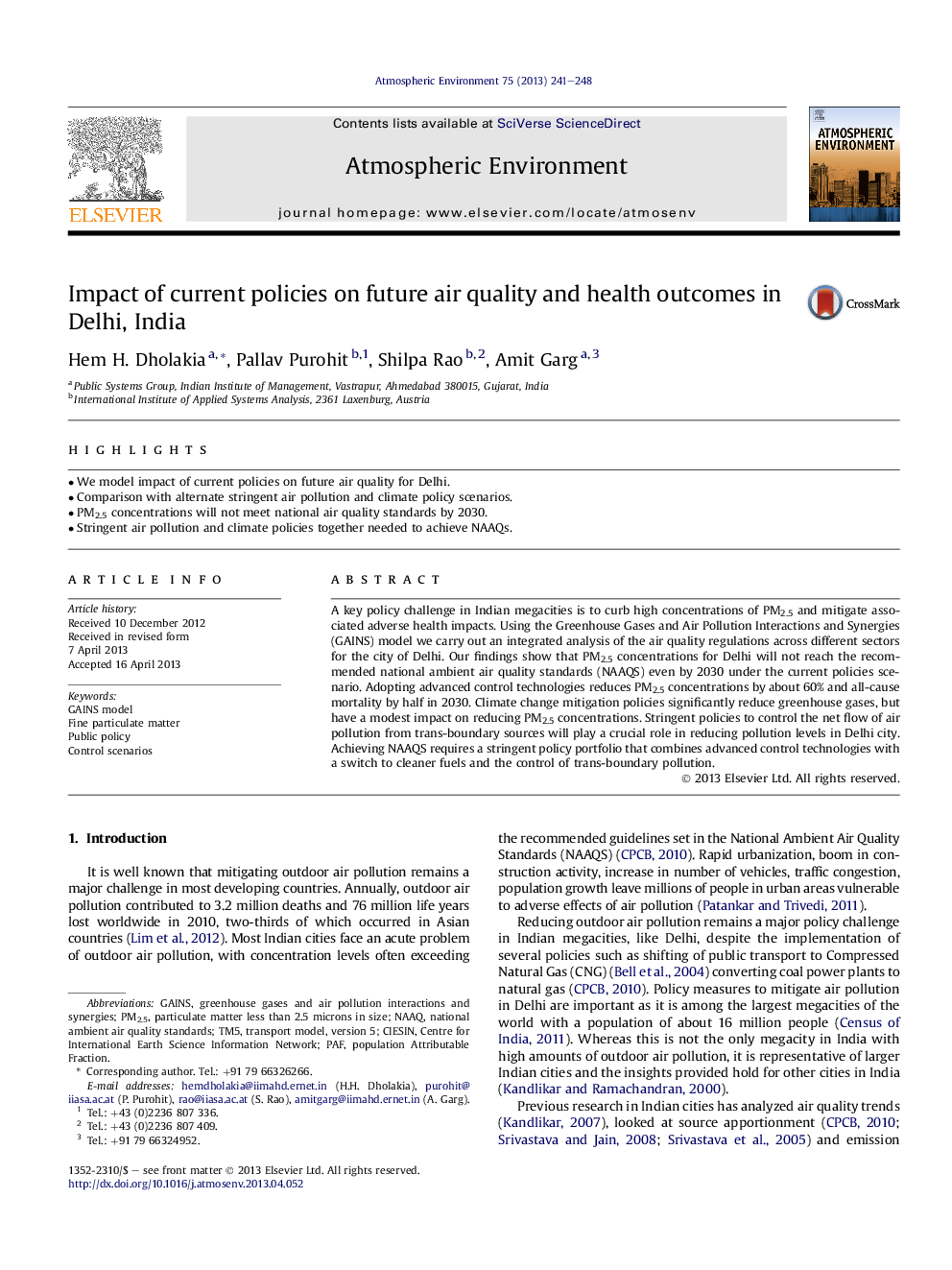| Article ID | Journal | Published Year | Pages | File Type |
|---|---|---|---|---|
| 6341886 | Atmospheric Environment | 2013 | 8 Pages |
â¢We model impact of current policies on future air quality for Delhi.â¢Comparison with alternate stringent air pollution and climate policy scenarios.â¢PM2.5 concentrations will not meet national air quality standards by 2030.â¢Stringent air pollution and climate policies together needed to achieve NAAQs.
A key policy challenge in Indian megacities is to curb high concentrations of PM2.5 and mitigate associated adverse health impacts. Using the Greenhouse Gases and Air Pollution Interactions and Synergies (GAINS) model we carry out an integrated analysis of the air quality regulations across different sectors for the city of Delhi. Our findings show that PM2.5 concentrations for Delhi will not reach the recommended national ambient air quality standards (NAAQS) even by 2030 under the current policies scenario. Adopting advanced control technologies reduces PM2.5 concentrations by about 60% and all-cause mortality by half in 2030. Climate change mitigation policies significantly reduce greenhouse gases, but have a modest impact on reducing PM2.5 concentrations. Stringent policies to control the net flow of air pollution from trans-boundary sources will play a crucial role in reducing pollution levels in Delhi city. Achieving NAAQS requires a stringent policy portfolio that combines advanced control technologies with a switch to cleaner fuels and the control of trans-boundary pollution.
